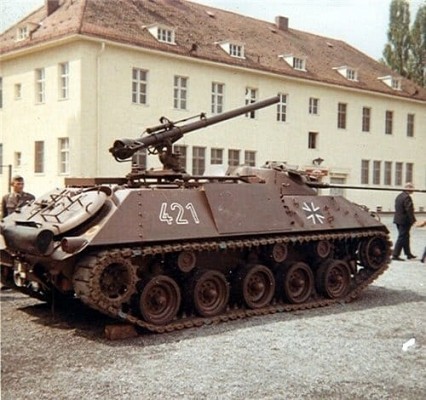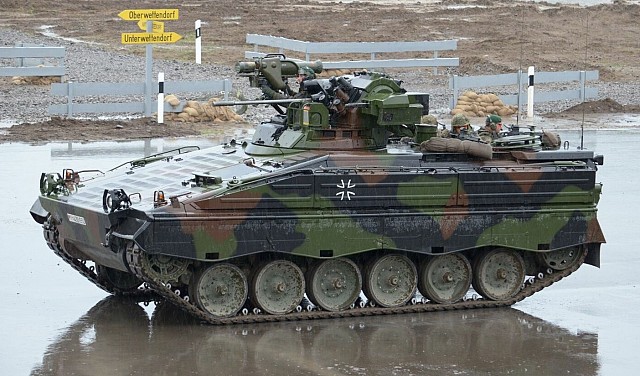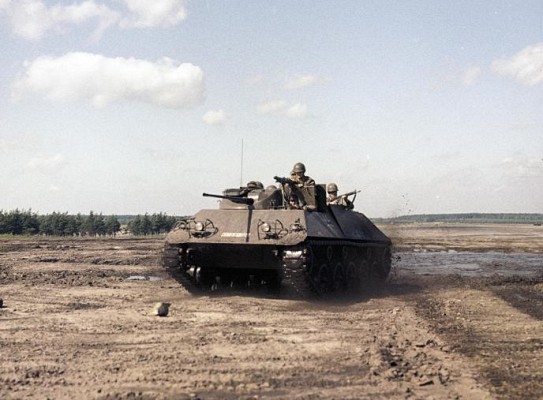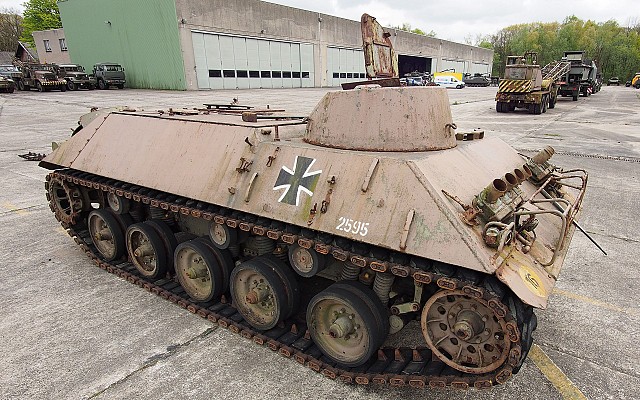HS-30
Schützenpanzer Lang | SPz 12-3
Overview

SPz 12-3
Former West German army SPz 12-3 mechanized infantry combat vehicle on display, photographed in 2012.
Source: Unterillertaler -
© CC BY-SA 3.0
Germany
Germany - Henschel
Schützenpanzer 12-3 (German military designation)
Description
Introduction
The HS-30 is a mechanized infantry fighting vehicle of West German origin. The HS-30 design was acquired as infantry fighting vehicle to accompany the Panzergrenadiers in combat. For its time it was very well armed. The thought was that the HS-30 could engage enemy positions and light vehicles, allowing tanks to focus on enemy tanks. Over 10.000 vehicles were to be acquired but due to mechanical problems only 2.176 were delivered before the program was cancelled, leading to the HS-30 political scandal.
Design
The HS-30 is a rather small vehicle with a low silhouette. Due to its size it could only carry 5 infantry. The crew of three is seated in the front and the turret with 20mm autocannon is mounted on the right. The infantry compartment is in the middle and is entered through roof hatches. The engine and drive train are mounted at the rear.
Firepower
The main armament of the HS-30 is a 20mm HS-820 autocannon placed in a one man turret. A total of 2.000 rounds are carried. Compared to other armored personnel carriers of its time it is very powerful. For this reason the HS-30 can be considered the first infantry fighting vehicle. There is no secondary armament although a 106mm recoilless rifle can be fitted. Vehicles on the same chassis include a tank destroyer with SS-11 missiles and mortar carriers.
Protection
The HS-30 is well armored, especially over the frontal arc. The steel armor is up to 30 mm thick and protects the crew from small arms fire and shell splinters. Over the frontal arc heavy machine gun rounds up to 14.5 mm are resisted. Two banks of 4 smoke grenade dischargers are fitted.
Mobility
The HS-30 has a limited mobility. The tracked chassis performed well off road but the engine was to weak for a vehicle of its weight. The Rolls Royce 235 hp petrol engine was selected to power a 9 t vehicle, not a 15 t one. As a result fuel consumption is very high. Early vehicles had many automotive failures, but most problems were solved during overhauls.
Users
The HS-30 was the standard infantry fighting vehicle of the German army in the 1960's. Due to technical problems only 2.176 of 10.000 planned vehicles were acquired and the Marder program was started in the late 1960's as a replacement. A batch of vehicles were sold to Peru.
Variants

SPz 12-3 mit 106 mm Leichtgeschütz M40A1
German SPz 12-3 fitted with the optional 106mm M40A1 recoilless rifle.
Source: Unknown author -
© Copyright lies with original owner
List of variants
Details
Subcomponents

20mm Hispano-Suiza HS.820
The main armament of the SPz 12-3 is the 20mm HS.820 autocannon. A total of 2.000 rounds are carried for this weapon.

Rheinmetall MG3
The 7.62mm MG3 machine gun carried by the infantry section can be pintle mounted on the front left of the SPz 12-3. The gunner is partially exposed when operating the weapon.

106mm M40
The 106mm M40 recoilless rifle can be fitted to the roof of the SPz 12-3 and fired from the vehicle when stationary.
Media
Related articles

Panzermörser 52-3
Self-propelled mortar variant of the HS-30. Armed with 81mm mortar, replaced in 1966 by 120mm Brandt mortar.

Marder
The Marder started to replace the SPz 12-3 from 1971 onward. Marder proved to be a successful design contrary to the HS-30.

BMP-1
Both the HS-30 and Soviet BMP-1 are contenders for the first true mechanized infantry combat vehicle to be introduced at scale.



















